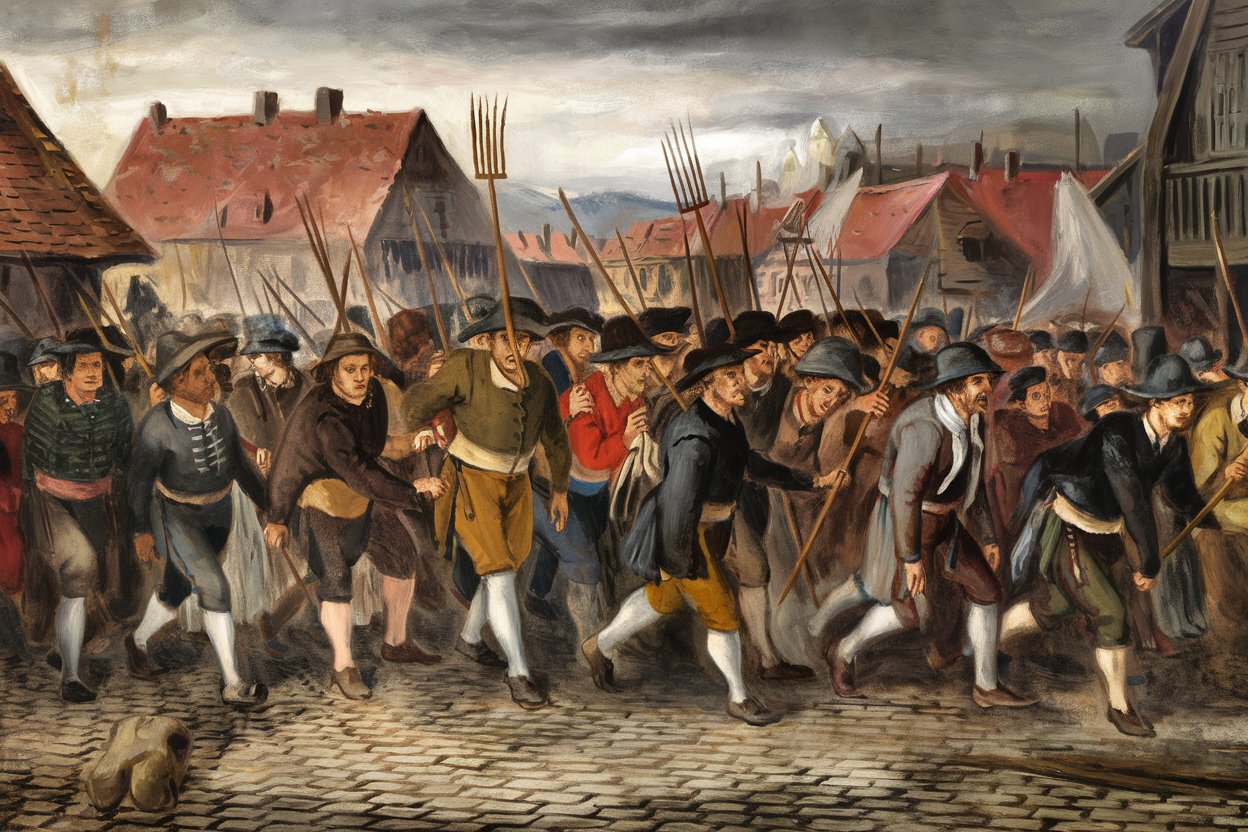
What sparked the Transylvanian Peasant Revolt? The Transylvanian Peasant Revolt of 1437 was ignited by harsh feudal oppression and unfair taxation. Peasants, burdened by heavy taxes and forced labor, reached a breaking point. The nobility's exploitation and the Catholic Church's demands for tithes added fuel to the fire. This revolt wasn't just about taxes; it was a cry for justice and equality. The peasants, led by Antal Nagy de Buda, demanded better living conditions and fair treatment. Their uprising shook the foundations of feudal society, highlighting the struggles of the oppressed and the power of unity. Let's dive into 25 fascinating facts about this significant historical event.
Key Takeaways:
- The Transylvanian Peasant Revolt of 1784 was a major uprising by peasants against feudal oppression, demanding land, freedom, and rights. It inspired future movements and left a lasting impact on Transylvanian society.
- Horea, Cloșca, and Crișan were key leaders of the revolt, fighting for the rights of the peasants. Their bravery and sacrifice turned them into national heroes and symbols of resistance against oppression in Romania.
The Transylvanian Peasant Revolt: A Glimpse into History
The Transylvanian Peasant Revolt of 1784 was a significant event in European history. It highlighted the struggles of peasants against feudal oppression. Here are some fascinating facts about this uprising.
- The revolt began in October 1784 in the Habsburg-ruled region of Transylvania.
- Horea, Cloșca, and Crișan were the three main leaders of the revolt.
- The uprising was primarily driven by the peasants' desire for land and freedom from serfdom.
- The revolt started in the village of Curechiu, where Horea and Cloșca gathered a group of peasants.
- The rebels initially targeted noble estates, burning down manor houses and destroying property.
- The revolt quickly spread to other parts of Transylvania, gaining support from thousands of peasants.
- The peasants demanded the abolition of serfdom, reduction of taxes, and the right to bear arms.
- The Habsburg authorities were initially caught off guard by the scale and intensity of the revolt.
- The rebels managed to capture several towns and fortresses, including the important city of Deva.
- The revolt lasted for about three months, from October 1784 to January 1785.
Key Figures and Their Roles
The leaders of the revolt played crucial roles in organizing and directing the peasants. Let's delve into their contributions.
- Horea, whose real name was Vasile Ursu Nicola, was a respected peasant leader and skilled carpenter.
- Cloșca, also known as Ion Oargă, was Horea's close associate and a charismatic leader.
- Crișan, or Marcu Giurgiu, was known for his military tactics and strategic planning.
- Horea and Cloșca traveled to Vienna in 1784 to present the peasants' grievances to Emperor Joseph II.
- Despite their efforts, the emperor did not take immediate action, leading to the outbreak of the revolt.
- Crișan led several successful attacks on noble estates, boosting the morale of the rebels.
- Horea and Cloșca were eventually captured by the Habsburg authorities in December 1784.
- Crișan was captured shortly after but managed to commit suicide in prison to avoid execution.
- Horea and Cloșca were executed on February 28, 1785, in a brutal public display meant to deter future revolts.
- Their deaths turned them into martyrs and symbols of resistance against oppression.
The Aftermath and Legacy
The revolt had lasting impacts on Transylvanian society and influenced future movements. Here are some key outcomes.
- The Habsburg authorities implemented some reforms to address the peasants' grievances, including reducing certain taxes.
- The revolt highlighted the deep social and economic inequalities in Transylvania.
- It inspired future peasant uprisings in other parts of Europe, including the Hungarian Revolution of 1848.
- Horea, Cloșca, and Crișan are remembered as national heroes in Romania, with monuments and memorials dedicated to them.
- The Transylvanian Peasant Revolt remains a significant chapter in the history of peasant movements and their fight for justice.
The Lasting Impact of the Transylvanian Peasant Revolt
The Transylvanian Peasant Revolt of 1437-1438 left a significant mark on history. This uprising highlighted the deep-seated tensions between peasants and nobility. It wasn't just a local skirmish; it echoed across Europe, influencing future revolts and uprisings. The peasants' courage and determination to fight for their rights inspired many. Though the revolt was ultimately crushed, it forced the ruling class to reconsider their treatment of the lower classes. The Union of Kápolna, formed during the revolt, showed the power of unity among different social groups. This event serves as a reminder of the importance of social justice and the ongoing struggle for equality. Understanding this revolt helps us appreciate the complexities of medieval society and the enduring spirit of those who fight for a fairer world.
Frequently Asked Questions
Was this page helpful?
Our commitment to delivering trustworthy and engaging content is at the heart of what we do. Each fact on our site is contributed by real users like you, bringing a wealth of diverse insights and information. To ensure the highest standards of accuracy and reliability, our dedicated editors meticulously review each submission. This process guarantees that the facts we share are not only fascinating but also credible. Trust in our commitment to quality and authenticity as you explore and learn with us.
